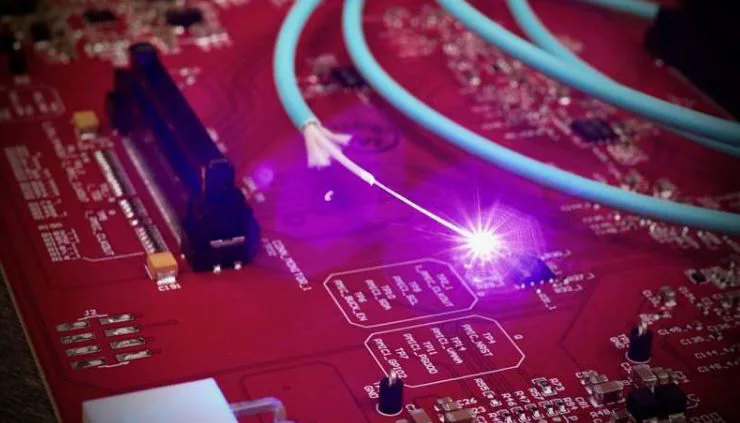
Our future tech game just got a major upgrade! Scientists at Heriot-Watt Uni in Edinburgh just dropped a mind-blowing method. Optical circuits are getting a turbocharged programming boost. The discovery promises unhackable communication networks and lightning-fast quantum computers.
Light packs a punch of information, and the buzz is all about optical circuits. These circuits compute with light, not electricity, marking the next big leap in computing tech, explained Professor Mehul Malik, an experimental physicist at Heriot-Watt’s School of Engineering and Physical Sciences.
Harnessing Nature for Unprecedented Precision
As optical circuits grow in size and complexity, controlling and crafting them becomes a challenge. This also impacts their performance. Therefore, the current research introduces a game-changing approach to engineer optical circuits, added Professor Malik.
For the study, Professor Malik and his team used everyday optical fiber. These fibers are thinner than a human hair, and they make use of light to ferry data.
Interestingly, they tapped into the natural scattering behavior of light within these fibers. This discovery allowed them to finely program optical circuits right inside the fiber.
The achieved precision levels surpassed what was previously considered impossible. In essence, they accomplished a level of precision that was once thought to be beyond reach.
Optical Circuits Steer Quantum Tech’s Future
Optical circuits play a pivotal role in advancing future quantum technologies. They operate on a microscopic scale, manipulating individual atoms or photons—those tiny particles of light.
Quantum tech is all about these powerhouse computers that operate on a whole new level compared to our everyday laptops. It performs mind-bending calculations and operations at speeds that would make our regular computer look like a snail.
And it doesn’t stop there! This tech realm isn’t just about flashy computers; it includes quantum communication networks. And guess what? They’re like digital Fort Knox, a robust and impenetrable level of protection for digital data.
At the tail end of quantum communication networks, we’ll find optical circuits playing a crucial role. They come into play, when it’s time to measure the information that has journeyed across extensive distances, said Professor Malik.

Encoding a Universe of Data in a Single Particle
Breaking down the power of light across its various dimensions, he emphasized that a wealth of information can be encoded on just one particle of light. The dimensions include its spatial structure, its temporal structure, and even its color.
Now, imagine if you could juggle computations with all those properties simultaneously – that’s the key to unleashing an enormous amount of processing power. It’s like having a multi-dimensional powerhouse at our fingertips!
Optical Circuits Take the Lead in a World of Linked Photons
The researchers went a step further, demonstrating that their programmable optical circuits have the prowess to manipulate quantum entanglement.
Now, let’s talk quantum entanglement—it’s when two or more quantum particles, like those light photons, stay linked even when they’re light-years apart.
This entanglement magic is a game-changer in quantum tech. How? Well, entanglement comes to the rescue by allowing particles to be entangled in a way that errors in one part of the system can be detected and corrected by the entangled particles, ensuring the accuracy of quantum computations.

Takeaway
The scientists’ ability to compute with light inside hair-thin optical fibers holds several promising future impacts, for instance:
- Enhanced Connectivity: this could lead to improved internet speeds, reduced latency, and enhanced connectivity for businesses and individuals.
- Quantum Computing Advancements: It might also contribute to the development of more powerful and reliable quantum computers. Thus, unlocking new possibilities in fields like cryptography, optimization, and complex simulations.
- Compact and Powerful Devices: It would also lead to the creation of compact and powerful gadgets across various industries, from healthcare to electronics.
- Breakthroughs in Data Processing: Faster and more efficient data processing could lead to breakthroughs in medical diagnostics, financial modeling, and smart manufacturing processes.
In a nutshell, the ability to compute with light in hair-thin optical fibers is poised to usher in a new era of connectivity, and transformative advancements in data processing across multiple industries.
Via: Heriot-Watt University & Phys.org



